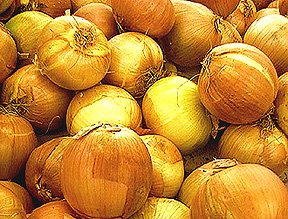Vegetable forcing for domestic consumption:
During winters in north Indian plains and hills, the temperature and solar radiations are sub-optimal for growing off-season vegetables –tomato, capsicum, brinjal, cucurbits, okra, cowpea, amaranth and chilli. In tomato, low temperature and low radiation cause puffiness and blotchy ripening. Hence, during extreme conditions of winter season (October-February) these vegetables can be well cultivated under polyhouse.
The protected environment could be well adopted in home gardens at slightly high altitude where winter is prolonged. A small-sized polyhouse can be made over uncultivable landscape, even on roof/terrace receiving sunlight for growing chilli, tomato, brinjal, summer squash and okra in pots and other containers. The high-priced vegetables –asparagus, leek, tomato, cucumber and capsicum – are most important crops for production around metropolis and big cities during winter season or off-season.
Raising off-season nurseries:
The cucurbits are warm season crops. They are sown in last week of February or in first week of March when night temperature is around 18-200C. But in polyhouse their seedlings can be raised during December and January in polythene bags protected from cold winds and frost. By planting these seedlings during January-end or first week of February, their yield could be taken in one and one-and a half months in advance than the normal method of direct sowing. This technology fetches the bonus price due to marketing of produce in the off-season.
Similarly, in plains as well as in temperate regions of the country, the seedlings of tomato, Chilli, capsicum and brinjal can be grown under plastic cover protecting them against frost and severe cold. The environmental condition particularly increase in temperature inside polyhouse, may have hastened the germination and early growth of warm season vegetable seedlings for raising early crops in spring-summer.
Asparagus, sweet potato, pointed-gourd and ivy gourd are sensitive to low temperature. The propagating materials of these vegetables can be well-maintained under polyhouse in winter season before planting their cuttings in early spring-summer season for higher profit.
Basic requirements:
Selection of seeds: It is imperative to have better quality seed possessing genetic characters suited to the environment in which it is grown. Good vegetable seed must be true-to name, viable, disease- and pest-free, free from weeds, dirt and other foreign materials.
Selection of cultivars: Cultivars suitable for open field condition are usually suitable for polyhouse cultivation. But relatively rapid-maturing cultivars and high-yielding hybrids are ideal. The selection of cultivars and hybrids depend on plant type and their growth behaviour. Tomato cultivars and hybrids should be indeterminate type. The plants are grown upright as a single stem rather than bush. The cucumber cultivars should be unique. They should have only female flowering habit, with dark green parthenocarpic (seedless) fruits free of bitterness.
Vegetable Seed Production:
Seed production in vegetables is the limiting factor for cultivation of vegetables in India. The vegetables require specific temperature and other climatic conditions for flowering and fruit setting. Some vegetables are grown in one part of the country but their seed production is restricted to another part. To reduce such microclimatic condition a protected environment is essential. Summer squash requires a mild climate for flowering, fruit setting and fruit development, and seed formation. Therefore, its seed production is only restricted to hilly region of north India in summer season. But nowadays seed production of summer squash ‘Australian Green’ and `Pusa Alankar’ is also feasible in north Indian plains in a low-and medium-cost greenhouse. Similarly, seed production of highly remunerative crops –tomato,capsicum and cucumber – is also performed under protected environment. The maintenance of purity of different varieties/lines can be achieved by growing them under greenhouse without giving isolation distance particularly in cross-pollinated vegetables –onion, cauliflower and cabbage. To get proper pollination and fruit set in onion, summer squash, cucumber and bittergourd, the bee-hives are kept inside during flowering.
Vegetable cultivation in low-and medium-cost greenhouse is a technical reality in India. Such production system has not only extended the growing season of vegetables and their availability but also encouraged conservation of different rare vegetables. The seed production of vegetables under protected environment is also a major step to increase vegetable production in India.











